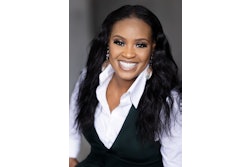Golf Books’ Authors Miss a Few Shots, but Play Good Rounds
When Tiger Woods came onto the Professional Golf Association tour in 1996, there were no full-time African American players on the tour. Jim Thorpe, the last Black player with a regular tour card, was a part-time member of the regular tour, awaiting his 50th birthday in 1999 so that he could join the Senior PGA tour.
With no full-time African American women on the Ladies Professional Golf Association tour and only Woods on the men’s tour, many individuals may assume that African Americans are just now getting into golf, especially with the current interest in getting more Black youth involved in the sport.
Two books should help correct that fallacy.
At the start of the 1990s, there was a paucity of books and materials on African Americans in golf. That changed in 1992 with the publication of Just Let Me Play: The Story of Charlie Sifford, The First Black PGA Golfer. Later, in 1998, came Forbidden Fairways by Calvin Sinnete.
Now we have two new books, African American Golfers During the Jim Crow Era, by Marvin P. Dawkins and Graham C. Kinloch, and African Americans and America’s Game of Golf, by Pete McDaniel. These provide a wealth of information about the history of Blacks and golf.
The authors discuss some of the same people and events, yet they take different approaches to the task. These books are not competitors. Rather, they complement each other. The Dawkins and Kinloch book has breadth and perspective, similar to survey research. The McDaniel book has depth and flavor, like ethnographic research.
Although Dawkins is the son of one of the journeyman Black professional golfers from the era of segregation, he and Kinloch, who is White, are virtual outsiders to the game. McDaniel, an African American, is definitely an insider. A former caddie, he played the game at a moderately high level of proficiency and now is a well-established senior writer for Golf Digest, the country’s leading golf magazine.
Dawkins’ and Kinloch’s very readable book uses golf as a case study of race relations in the 20th century. As sociologists, they take a scholarly approach, providing references and developing a race relations stage model of “Black golf and White racism.”
They identify six stages: total exclusion, limited minority roles, enforced segregation, discrimination, desegregation battles and limited integration. For each, they describe the racist act and the African Americans’ response — from building their own institutions to filing lawsuits challenging the status quo.
The authors chronicle African Americans’ participation in golf from its early days — beginning with John Shippen, who played in the second U.S. Open in 1895, and Dr. George F. Grant, a prominent Black dentist from Boston who patented the first golf tee in 1899. They continue with the development of the Black United Golf Association in 1926, Black clubs “without real estate” and Black-owned golf courses in the 1920s, ’30s and ’40s.
However, the book’s greatest contribution is its detailed description of golf’s popularity among African Americans in the 1930s and 1940s, of the battles Blacks waged from 1940 to 1960 to play on public courses and of the role Joe Louis played.
The authors demonstrate that golf was quite popular in the Black press in the 1930s and 1940s, especially outside the South. In fact, golf ranked second only to baseball in sports coverage, and its popularity was obvious from the many court battles African Americans fought to gain access to public courses and to the PGA tour.
It may be somewhat surprising that a book on golf should revise the opinions of many about Louis, best known as a boxing champion. Widely regarded as a rather dim-witted Uncle Tom, Louis comes off quite differently in this book.
Louis, an avid golfer, is seen here as promoting Black golfers. At the height of his boxing career, he sponsored tournaments, provided purses for professional players and played in national Black tournaments.
He provided Rhodes with a steady income, hiring him as his personal instructor. He influenced Billy Eckstine to do the same with Sifford. Louis also worked tirelessly to force the PGA to lift its Whites-only policy so that Rhodes, Sifford, Spiller and others could play on the tour on a regular basis.
All in all, the book is very informative. My quarrels with it are few. One potential problem is that by referring to “golf, in its typical country-club setting… [as] more elitist,” the authors perpetuate a myth about golf.
In the early days, the majority of golf courses were private clubs. But this is not the “typical” situation today. In 1996, 70 percent of the 15,703 U.S. golf courses were public — and 88 percent of the new courses opened that year were, too. The average household income of all golfers in 1996 was $59,970. Thus, participants typically are not from the country club set or the elite.
McDaniel, a journalist, takes a different approach in “African Americans and America’s Game of Golf” in addressing the rich history of Black golfers. His objective is to tell the story that “the souls of African American golf pioneers cry for someone to tell.” He does just that, documenting the lives of significant Black players, from Shippen in the 1890s to Woods in the 1990s. Woods wrote the book’s foreword.
McDaniel tells the stories of golf-tee developer Grant and Joseph Bartholomew, who in the early 20th century designed and developed courses in Louisiana on which he was never permitted to play. He chronicles the alternative institutions: the UGA in 1926, the North American Golf Association in 1964 and Black-owned golf courses in the 1930s and 1940s.
The author reports that in 1939, fewer than 20 of the more than 5,000 U.S. golf courses were open to Blacks. Consequently, African Americans began to establish their own private country clubs, beginning with Shady Rest and Mapledale in the 1920s. Later, other clubs cropped up, although most have since disappeared. Several Black country clubs, however, have opened in recent years.
McDaniel describes fights to integrate public courses in such places as Atlanta, Greensboro, N.C., and Washington, D.C. He tells of the struggles to integrate the PGA tour, noting that 19 to 26 Black men have held PGA tour cards and three Black women — Althea Gibson, Renee Powell and Laree Suggs — have played on the Ladies PGA tour.
He tells the story of Dendy, who among other exploits, made his way into “Ripley’s Believe It or Not” at a 1933 exhibition, where without any warm up, he shot a double eagle, birdie, birdie and birdie on the first four holes.
He tells of Ball, Hartsfield, Spiller, Rhodes, Sifford and Lee Elder, including Elder’s association with Titanic Thompson, the notorious golf hustler. He discusses the Wak-Robin Golf Club, a Black women’s group that started in the 1930s, and how Gregory, Paris Brown, Maggie Hathaway and Barbara Douglas made significant contributions toward the game’s evolution among African Americans. And he chronicles the careers of other players who made it to the PGA tour after it was forced open — men like Pete Brown, Calvin Peete and Jim Thorpe, who won PGA tournaments. Men like Rafe Botts, George Johnson and others who did not. And players such as Dent and Charlie Owens, who didn’t win on the regular PGA tour but who had success on the Senior PGA tour.
He also recalls super talents like James Black and Chuck Thorpe, who never realized their great potential, although the tour had been opened for them. In addition to the exploits of individuals, McDaniel also covers recent events and issues like country club discrimination, the emergence of Black college golf and minority foundations.
This book does contain a few minor lapses. One problem: a reference to Thurgood Marshall as an “up-and-coming lawyer,” when he was called upon in the mid-1950s to litigate one of the golf lawsuits. That was hardly the case. By this time Marshall was one of the true heroes of Black America, often referred to as “Mr. Constitution.”
Also, McDaniel might have been too lenient in his discussion of the Master’s tournament, one of golf’s most racist institutions. He indicates that Sifford never qualified for the Masters, as if it were just a matter of Sifford meeting stated qualifications.
Yet for many years during Sifford’s career, Masters officials did not set their qualifications until the end of the preceding year, and a player qualified depending upon what he did during the year. Those qualifications appeared to change from year to year, depending upon what Sifford or Pete Brown had done during the year. Under the qualification scheme that Masters officials eventually were forced to set — Sifford would have qualified at least twice and Brown at least once in the 1960s.
© Copyright 2005 by DiverseEducation.com















